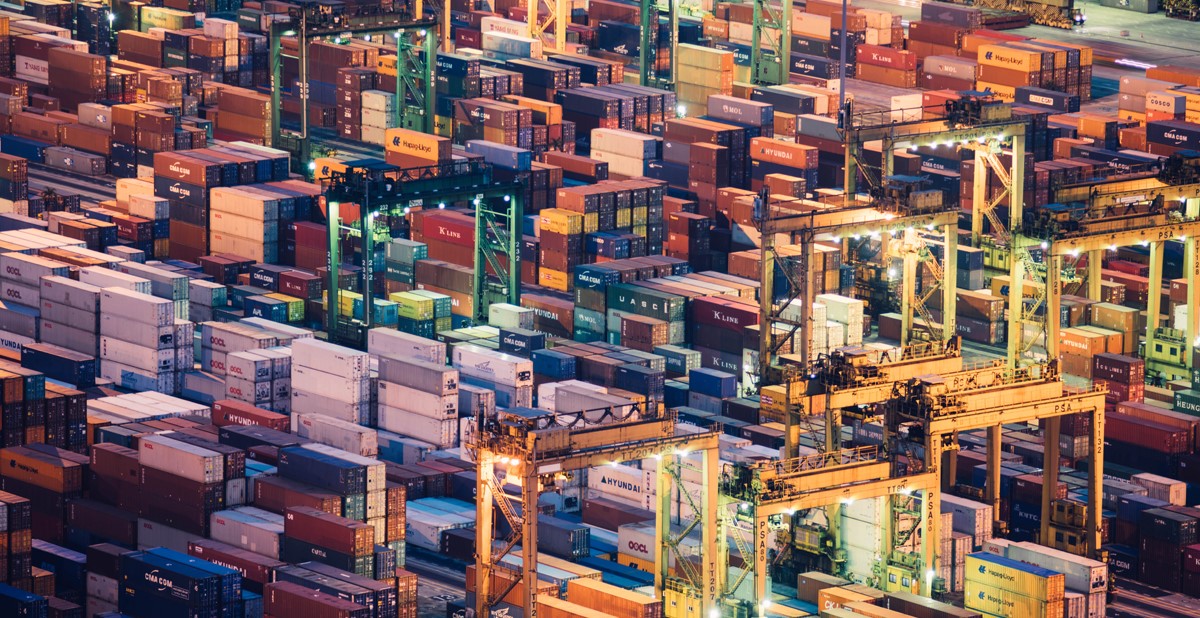Port Traffic Backlog Grows As Supply Chain Challenges Persist

The supply chain is straining. Delays in deliveries and product shortages are becoming more commonplace as consumer demand and imports surge, while the labor, vehicles and space to move it along remain in short supply.
The Wall Street Journal reported on Monday that more than 60 container ships are sitting at anchorage off the ports of Long Beach and Los Angeles, some waiting up to three weeks to offload their cargo. Business Insider related a similar picture on the East Coast, as approximately 24 ships wait off the coast of New York. Ships parked at sea are a visible indicator of the string of challenges impacting the supply chain. The issue was explored in detail during the session “Import Challenges” on August 20, part of the Logistics Day event PPAI held in conjunction with its 2021 Product Responsibility Summit Direct-2-You. It featured a panel discussion with Dr. Noel Hacegaba, executive director of the Port of Long Beach; John McLaurin, president of the Pacific Merchant Shipping Association; Matt Schrap, CEO of the Harbor Trucking Association, and Nathan Cotter, vice president of compliance at Hit Promotional Products.
Imports dropped in early 2020 as concerns over the pandemic grew but accelerated beginning in July of last year. At the Port of Long Beach, for example, every month since July 2020 has been a record-breaking month for the port. Hacegaba said, “2020 was a record year for us. We processed 8.1 million TEUs [twenty-foot equivalent units], which is our best on record. In 2021, we are already on track to set a new record, eclipsing nine million TEUs. While we welcome this volume and these records, what’s most important to us is how we work as a port ecosystem.”
McLaurin added, “We’ve been moving record amounts of cargo. All over the nation. The ports have never moved the volume that we have in the year and a half. It’s a tribute to everyone in the supply chain.”
Practically every part of that ecosystem is under pressure, Hacegaba indicated. “We understand the need for additional capacity. Our terminals are working at 80-percent capacity. We’re not at 100 percent but not for lack of desire. There are some system-wide challenges that are limiting our ability to reach a higher capacity. Namely, access to critical equipment, whether it’s chassis, it’s rail cars, whether it’s physical real estate—footprint, space. The lack of warehouse and distribution space is creating a backlog of containers in the ports. With nowhere to go, these containers are spending a lot more time in the terminal. Key indicators, like container dwell time and rail dwell time, are more than twice what they are normally,” he said.
The lack of space is only one part of the vicious cycle. “We’re seeing a doubling of average import dwell time,” said McLaurin. “That results in more labor being allocated for terminal operations and potentially taken away from vessel operations. You can only put so much cargo into the terminal, so you’re now rearranging it, piling it higher and engaged in more unproductive moves.”
He added, “Chassis shortage is a huge issue. The on-street dwell time for chassis in California is 8.3 days. It’s an indication that they’re being used for storage and cargo just doesn’t have anywhere to go. The number of chassis available in some marine terminals is in single digits. If there isn’t a chassis, that trucker isn’t moving. And for on-dock rail, some are reporting that dwell time is getting better. But other facilities are reporting two weeks of dwell time and some off-dock rail facilities are seeing up to 25 days.”
Warehouse capacity is also tight. The Wall Street Journal reports that 98 percent of the warehouses in Southern California are full, and that the volume of operations the ports are conducting needs at least 25 percent more than is available.
“There isn’t one single point in the supply chain where we can lay the blame,” said Schrap. “It’s consumer demand, acts of God, the weather or a pandemic-driven decision-making tree. It all boils down to increased communication, consistent communication and a holistic approach to everything.”
The ports have taken steps to alleviate some of the issues. “What we’ve been doing to inject some capacity into the system as quickly as possible is that we made 49 acres of vacant land available to support our operations,” Hacegaba said. “It allows containers to be moved readily and more quickly out of our terminals.”
They’ve also expanded their operational hours. The Ports of Long Beach and Los Angeles announced on September 17 that they will expand the hours during which trucks can pick up and return containers, with the Port of Long Beach operating 24 hours a day, Monday through Thursday, and the Port of Los Angeles expanding weekend hours.

